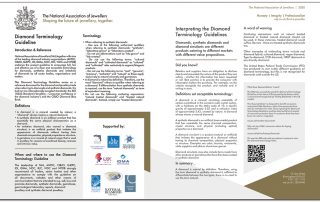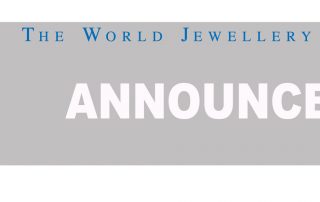CIBJO President applauds decision in United Kingdom to regard Diamond Terminology Guideline as Primary Authority Advice
DECEMBER 8, 2020
Gaetano Cavalieri, President of CIBJO, the World Jewellery Confederation, has described as “profoundly important” the agreement in the United Kingdom between the National Association of Jewellers (NAJ) and UK Trading Standards, a British government service working to ensure that consumers are protected from unfair trading, to provide the Diamond Terminology Guideline the status of Primary Authority Advice.
Developed by CIBJO together with eight other leading diamond and jewellery industry organisations and first released in 2018, the Diamond Terminology Guideline is designed to serve as the reference document when referring to or describing diamonds, laboratory-grown diamonds and imitations of diamonds. It is built on two internationally accepted standards: the ISO 18323 Standard (“Jewellery – Consumer confidence in the diamond industry”) and the CIBJO Diamond Blue Book. It encourages full, fair and effective use of a clear and accessible terminology by all sector bodies, organisations, traders and retailers.
“This is a profoundly important development in what is a concerted campaign to normalise on a global basis unambiguous terminology that clearly differentiates between natural diamonds, laboratory-grown diamonds and imitations of diamonds, enabling consumers to make informed purchasing decisions,” Dr. Cavalieri said. “The collaboration between NAJ and UK Trading Standards means that consumers in a key jewellery market like Great Britain are being afforded protections now available in a limited, but still growing group of countries. Measures like this enhance confidence both in our products and in the jewellery trade itself.
The immediate effect of the NAJ-UK Trading Standards agreement is that more than 2,000 members of the association, who collectively comprise over half of the jewellery trade in the United Kingdom, have received recommendations from UK Trading Standards about describing diamonds, laboratory-grown diamonds and imitations of diamonds, based on the Diamond Terminology Guideline. By following the Primary Authority Advice, their businesses are protected against the risk of any action by enforcing authorities, even if they have a different perspective as to what needs to be done to be compliant with the law.
“By understanding the nature of the products they buy and the different value propositions, consumers are able to make informed decisions, remain confident and continue to love diamond jewellery. This is why clear and accessible diamond terminology is fundamental. In addition, as consumers increasingly get informed and shop in an interconnected digital global market, the language used across all communication channels should follow guidelines that are ideally aligned across countries,” said Raluca Anghel, Head of External Affairs and Industry Relations, Natural Diamonds Council.
With this latest development, the United Kingdom joins a group of countries that are home to important jewellery markets that have enshrined accurate diamond terminology into law. The most doctrinaire is most probably France, where a decree only allows the use of the term “synthetic diamonds,” when referring to laboratory-grown materials, and forbids the use of descriptors such as “cultivated,” “real,” and “cultured.”
In Belgium, a Royal Decree issued in November 2019 referenced the nomenclature presented in the Diamond Terminology Guidelines and the CIBJO Blue Book in listing acceptable terminology to be used by members of the jewellery and gemstone trades. It was an update of a decree that had been issued in 2014.
In Germany the ISO 18323 standard has been translated into a German DIN standard. Furthermore, the Diamond Terminology Guidelines are recognized by the German Federal Ministry for Economic Affairs and Energy as the reference documents for the diamond and jewellery trades. This followed a decision by a District Court in Munich in 2004 that relied on the CIBJO Diamond Blue Book in substantiating its decision that the term “cultured” is unacceptable for describing laboratory-grown diamonds.
China has adopted the Diamond Terminology Guidelines as reference documents for the diamond and jewellery trade, in compliance with Chinese GB/T national standards, and in the United Arab Emirates the Emirates Authority for Standardization and Methodology (ESMA) officially approved the Diamond Terminology Guidelines in November 2019.
In 2018, CIBJO and the Antwerp World Diamond Centre (AWDC) reached agreement with the Ministry of Finance of the Russian Federation to harmonise the official system used in Russia for classifying polished diamonds with the standards and nomenclature detailed in the CIBJO Blue Book.
To download the Assured Advice version of the Diamond Terminology guideline in PDF format, PLEASE CLICK HERE.







